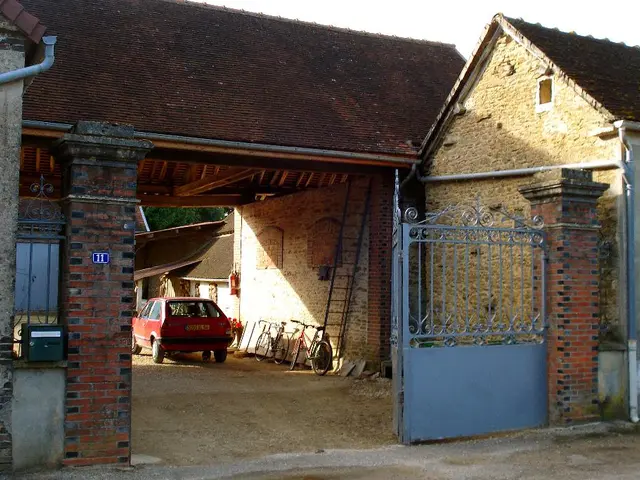Enhancing Language Proficiency with Forest Schools: Mysteries of Nature Spur Linguistic Growth
======================================================================================
In the heart of nature, children in forest schools are not just learning about the environment, but also honing their language skills and broadening their cultural horizons.
Through culturally rich narratives, indigenous stories introduce children to sophisticated environmental terminology, enriching their vocabulary with words related to flora, fauna, weather, and physical experiences. This organic learning process, driven by interaction with real objects and phenomena, promotes meaningful language acquisition [3].
Forest schools encourage child-led conversations and storytelling, as children share their experiences and narrate activities such as den-building, tool use, or exploration. This fosters narrative skills and expressive language in an engaging way, providing a unique opportunity for language development [1].
Social communication and collaborative language use are also enhanced in forest schools. Working in mixed-ability groups to solve problems and build structures requires verbal interaction, negotiation, and turn-taking, thereby improving pragmatic language skills and social communication [1][5].
The freedom and flexibility offered by forest schools allow children to learn at their own pace, reducing pressure and facilitating more natural language practice through open-ended play and inquiry [3]. This unstructured learning environment increases imaginative play and concentration, supporting deeper engagement in language-rich activities than some traditional early childhood settings [2].
Nature-based learning also supports cognitive processes underlying language development, such as critical thinking, creativity, and problem-solving, further enriching communication abilities [5].
Beyond vocabulary expansion, forest schools introduce children to formal scientific writing through field documentation. Children record measurements, create hypothesis statements, and document experimental results using precise scientific language [4].
Moreover, nature-inspired learning experiences spark imaginative storytelling, enhancing creative writing abilities. Forest exploration inspires poetry writing as children capture the sounds, sights, and feelings of their outdoor experiences [6].
Stories from different cultures introduce geographical terms like "tundra," "savanna," and "monsoon" through narrative contexts that make these terms meaningful. Seasonal folklore expands temporal vocabulary with phrases like "autumnal equinox" and "winter solstice" while explaining natural cycles [7].
In the process, children develop cross-cultural communication skills by sharing their own family's nature traditions and learning others' environmental customs. They learn phrases such as "honoring the land" and "taking only what you need" through story contexts that make abstract environmental ethics concrete [8].
This exchange builds vocabulary around cultural practices like "harvest celebrations" and "seasonal migrations" while fostering inclusive language patterns. Children develop narrative skills by creating stories about woodland adventures, mythical forest creatures, or imagined conversations between animals [9].
Mythological explanations for geological features introduce terms such as "erosion," "sediment," and "weathering" through memorable story contexts that enhance retention [10].
In summary, forest school environments foster a more interactive, explorative, and socially collaborative setting that naturally enhances children's language skills through immersive, meaningful experiences with peers and the natural world, outperforming traditional classroom learning in these respects [1][3][5].
- By engaging in public speaking through storytelling and collaborative discussions, children in forest schools further develop their language skills and pragmatic communication.
- Beyond literature and writing, forest schools encourage science education by teaching children formal scientific language and concepts through field documentation and exploration.
- Through exposure to diverse cultural narratives, forest school education not only promotes language learning but also cultivates cross-cultural communication skills and understanding, including the use of terms like "harvest celebrations," "seasonal migrations," and "erosion."




